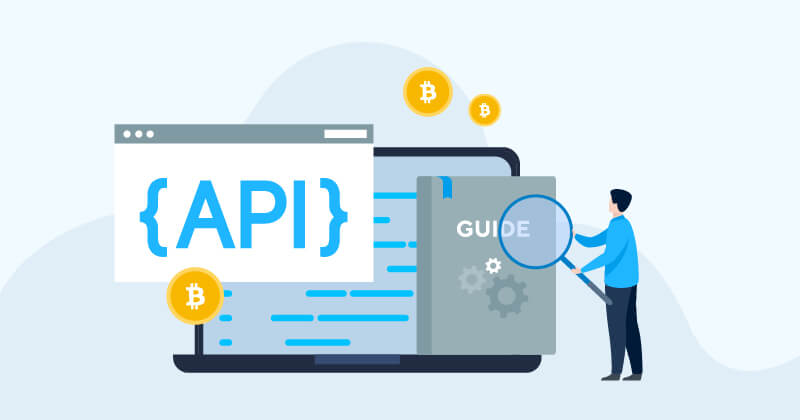All you need to know about Crypto Exchange APIs

A crypto exchange API serves as the digital bridge between trading platforms and developers, enabling seamless, programmatic access to market data, trading functionalities, and account management. These interfaces empower algorithmic traders, fintech startups, and institutional investors to automate strategies, integrate real-time price feeds, and build innovative applications that leverage the decentralized finance (DeFi) ecosystem. In this comprehensive guide, we will explore the core concepts, practical implementations, security considerations, and future trends of crypto exchange APIs over approximately 1,600 words.
1. Understanding Crypto Exchange APIs
1.1 Definition and Purpose
At its core, a crypto exchange API is a set of RESTful or WebSocket endpoints that expose key functionalities of a cryptocurrency exchange. Through these interfaces, developers can retrieve market data, place buy or sell orders, fetch account balances, and manage withdrawals without manual interaction with the exchange’s graphical user interface.
1.2 Types of Crypto Exchange APIs
- Public APIs: Provide unauthenticated endpoints for retrieving market data such as ticker prices, order book depth, and recent trades.
- Authenticated APIs: Require API keys or tokens to access trading operations and account-specific information like balances and order history.
- WebSocket APIs: Offer real-time, push-based data streams for live market activity, enabling low-latency trading strategies.
2. Core Endpoints and Their Functionality
2.1 Market Data Endpoints
Market data endpoints are typically open to all users and include:
- Ticker: Returns current bid, ask, last traded price, and 24-hour volume for specified trading pairs.
- Order Book: Shows aggregated bid and ask orders at various price levels, providing insights into market depth.
- Trade History: Delivers a list of recent trades executed on the exchange.
2.2 Trading Endpoints
Authenticated trading endpoints allow users to:
- Place Orders: Submit new buy or sell orders, with parameters for price, quantity, order type (limit, market, stop-loss, etc.).
- Cancel Orders: Cancel open orders by specifying order IDs.
- Query Orders: Retrieve the status of existing orders, including filled, partially filled, or canceled.
2.3 Account Management Endpoints
Developers can manage their funds and track account activity through:
- Balance: Fetch current balances and available margin for each asset.
- Deposit/Withdrawal History: View past deposit and withdrawal transactions, including status and timestamps.
3. Authentication Mechanisms
3.1 API Keys and Secrets
Most exchanges issue two-part credentials: an API key (public identifier) and an API secret (private, for signing requests). This pair allows the platform to verify the user’s identity and authorize operations.
3.2 HMAC Signature
Secure exchanges require that each authenticated request include a signature generated using an HMAC algorithm (usually SHA-256 or SHA-512) applied to the request payload and timestamp.
3.3 OAuth 2.0 and JWT
Some modern exchanges adopt OAuth 2.0 or JSON Web Tokens (JWT) for more flexible, token-based authentication, allowing easier revocation and role-based permissions.
4. Rate Limits and Throttling
4.1 Importance of Rate Limiting
To protect infrastructure and ensure fair usage, exchanges enforce rate limits, restricting the number of requests per minute or second. Exceeding these limits typically results in HTTP 429 errors.
4.2 Best Practices for Handling Rate Limits
- Backoff Strategies: Implement exponential backoff to retry requests after receiving a throttling response.
- Efficient Batching: Combine multiple data requests into a single call when supported.
- WebSocket Streams: Use real-time streams for frequent updates instead of polling REST endpoints.
5. Data Formats and Serialization
5.1 JSON vs. Binary Protocols
While JSON is the most common data serialization format due to its readability and ubiquity, some high-performance APIs support binary protocols like Protocol Buffers or MessagePack for lower latency.
5.2 Timestamp Precision
Accurate timestamping is vital for high-frequency trading. Many exchanges return timestamps in milliseconds or microseconds since the Unix epoch.
6. Security Considerations
6.1 Protecting API Credentials
- Environment Variables: Store API keys and secrets in environment variables or secure vaults, not in source code.
- Encryption at Rest: Ensure credentials are encrypted in any persistent storage.
6.2 Whitelisting and IP Restrictions
Most exchanges allow users to whitelist specific IP addresses, reducing the risk of credential misuse from unauthorized networks.
6.3 Permissions Scoping
Fine-grained permissions enable limiting API keys to read-only, trading-only, or withdrawal capabilities, minimizing potential damage if compromised.
7. Error Handling and Retries
7.1 Common Error Codes
- 400 Bad Request: Malformed or missing parameters.
- 401 Unauthorized: Invalid credentials or signature.
- 403 Forbidden: IP not whitelisted or insufficient permissions.
- 429 Too Many Requests: Rate limit exceeded.
- 500+ Server Errors: Exchange-side issues.
7.2 Retry Logic
Implement intelligent retry logic based on error codes:
- Retry on 500 Errors: With exponential backoff.
- Do Not Retry on 400/401/403: These indicate client-side misconfiguration.
- Limited Quickly on 429: Honor Retry-After headers when provided.
8. Building Trading Bots with a Crypto Exchange API
8.1 Strategy Implementation
- Market Making: Place simultaneous bid and ask orders to capture spread.
- Arbitrage: Exploit price discrepancies across multiple exchanges.
- Trend Following: Automate buy/sell signals based on moving averages or momentum indicators.
8.2 Backtesting and Simulation
Before deploying to live markets, use historical data from the exchange’s API to simulate performance.
8.3 Sandbox Environments
Many exchanges provide sandbox modes or testnets, allowing developers to trial strategies with simulated assets.
9. SDKs and Client Libraries
9.1 Official vs. Community SDKs
- Official SDKs: Maintained by the exchange, ensuring compatibility with latest API versions.
- Community SDKs: Often provide additional language support or simplified interfaces but may lag on updates.
9.2 Language Support
Popular languages for crypto exchange API integration include Python, JavaScript/Node.js, Java, Go, and C#. Select a library that fits your team’s expertise.
9.3 Custom Wrappers
For specialized needs, developers sometimes craft thin wrappers around HTTP requests to unify multiple exchange APIs under a single interface.
10. Monitoring and Analytics
10.1 Logging Requests and Responses
Maintain detailed logs of API interactions, including request payloads, timestamps, response statuses, and latencies.
10.2 Performance Metrics
Track key metrics:
- API Latency: Time from request to response.
- Error Rates: Percentage of failed or throttled requests.
- Throughput: Number of successful requests per minute.
10.3 Alerting on Anomalies
Integrate with monitoring tools (e.g., Prometheus, Grafana) to trigger alerts on elevated error rates or abnormal latencies.
11. Versioning and Deprecation Policies
11.1 Semantic Versioning
Many exchanges adopt semantic versioning (e.g., v1, v2) to signal breaking changes. Always pin your client to a specific API version.
11.2 Handling Deprecations
- Subscribe to Change Logs: Monitor email lists or RSS feeds for deprecation notices.
- Grace Periods: Exchanges typically offer months of transition time before removing old endpoints.
12. Regulatory Compliance
12.1 KYC and AML Requirements
Authenticated endpoints may require submitting identity documents to unlock trading and withdrawal features.
12.2 Geo-Restrictions
Certain jurisdictions prohibit cryptocurrency trading altogether or restrict specific assets. The API may reject requests based on IP geolocation.
13. Use Cases Beyond Trading
13.1 Portfolio Trackers
Apps can aggregate balances across exchanges, using the API’s balance endpoints to provide unified portfolio views.
13.2 Tax and Accounting
Generate transaction reports and tax statements by pulling historical trade and withdrawal data.
13.3 Market Analytics Dashboards
Visualize order book depth, trading volumes, and price charts by integrating market data feeds into BI tools.
14. Testing and QA
14.1 Unit and Integration Tests
- Mocking Endpoints: Use tools like WireMock to simulate API responses for reliable unit tests.
- End-to-End Testing: Run tests against sandbox or testnet environments.
14.2 Security Audits
Regularly review code for insecure storage of API keys, inadequate input validation, or logging of sensitive data.
15. Future Trends
15.1 Decentralized APIs
Emerging protocols aim to expose exchange-like functionalities in a decentralized manner, eliminating single points of failure.
15.2 Cross-Chain Trading
APIs that aggregate liquidity across multiple blockchains and enable atomic swaps without centralized intermediaries.
15.3 AI-Driven Adaptation
Applying machine learning to optimize rate limit handling, anomaly detection, and automatic parameter tuning.
Conclusion
The crypto exchange API is the foundational element for any automated trading system, fintech application, or blockchain analytics platform. By mastering authentication, rate limiting, error handling, and security best practices, developers can unlock the full potential of programmatic trading and data analytics. Whether you’re building a simple price alert service or a sophisticated arbitrage bot, the principles and practices outlined in this guide will help you navigate the evolving landscape of digital asset exchanges.




